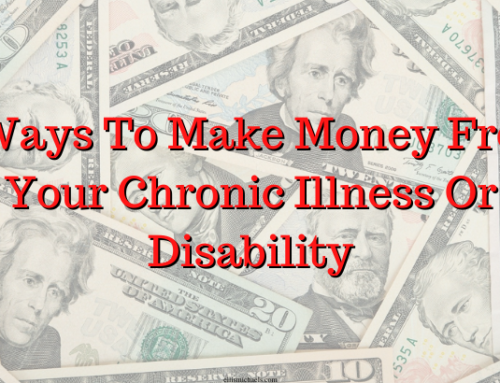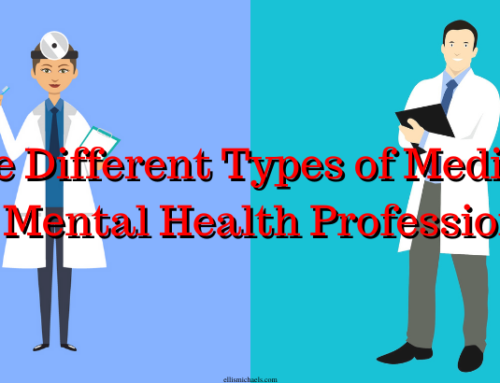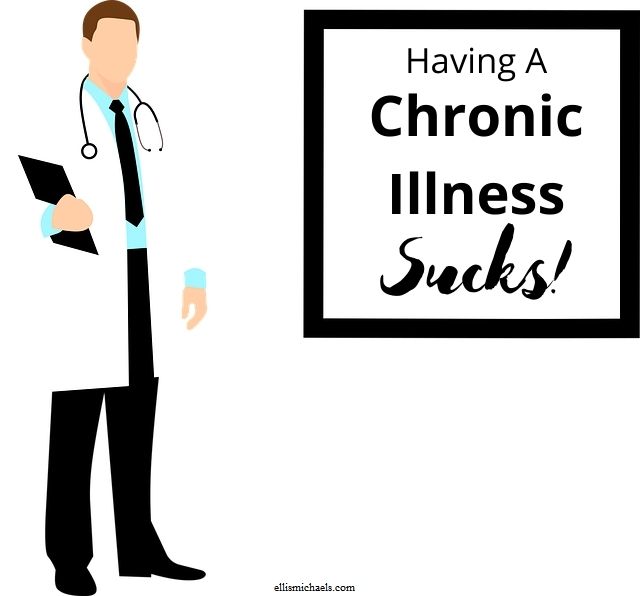If you’re a regular reader of mine, you probably already know how I feel about drugs. I don’t think there’s anything wrong with taking substances to improve the quality of your life – as long as they are taken intelligently and responsibly.
Apparently neither do the American people. About 70 percent of Americans are on at least one prescription drug.1 And a large percentage of them are on psychotropic drugs like antidepressants, anxiolytics (anti-anxiety drugs), mood stabilizers, and sleeping pills.
Many prescription drugs come with lots of side effects. And you’re not free to use what you want: you need to get them prescribed by your physician.
But what some people may not realize is that there are tons and tons of perfectly legal drugs, herbs, plants, and supplements out there that can be used to treat a variety of symptoms. A 2007 study found that almost 40% of American were using some kind of alternative medicine.2
There are things like valerian, l-theanine, and kava that reduce anxiety. There are mood-boosting supplements like St. John’s Wort and Sam-E. And then there’s the pain-reducing, mood-improving, energy-increasing, and anxiety-destroying plant known as kratom.
What is kratom?
Table of Contents
Kratom (aka Mitragyna speciosa) is a plant that is native to Thailand and Southeast Asia and belongs to the same family of plants as the coffee bean.3 In lower doses, kratom has stimulant-like effects. But in higher doses, kratom can have a powerful analgesic (painkilling) effect.4
It has been used for centuries as a pain reliever and mild stimulant to treat diarrhea, premature ejaculation, anxiety, depression, chronic pain and opiate addiction.5 There are countless reports all over the internet of people using kratom for all of these reasons and more.
The way that kratom works, at least in part, is by activating the same receptors in the brain that opiates (like morphine or oxycodone) do. Specifically, it has been shown to bind to the mu and kappa opioid receptors.6
But kratom isn’t nearly as powerful as these prescription painkillers. Prescription opioids like morphine, codeine, and fentanyl are known to be full opioid receptor agonists. This means they fully bind to opioid receptors in the brain which, in high enough doses, can lead to respiratory depression and even death.7

Kratom Plant
Kratom, on the other hand, is only a partial opioid receptor agonist.8 It tickles these receptors just enough to cause pain relief, mood improvement, anxiety reduction, and more. And it doesn’t cause the dangerous respiratory depression that most prescription opiates do.9
There are over 40 naturally occurring alkaloids in kratom. The two that seem to be responsible for many of its benefits are mitragynine and 7-hydroxymitragynine.10 These are both partial opioid agonists.
However, the pharmacological effects of kratom have been shown to extend beyond our opioidergic systems. Other neurotransmitters kratom may interact with include serotonin, dopamine, and norepinephrine.8 These interactions may be related solely to mitragynine and 7-hydroxymitragynine or in conjunction with kratom’s other alkaloids. Some of these other alkaloids include speciociliatine, speciogynine, corynantheidine, paynantheine, mitraphylline, mitralactonal, rhynchophylline, raubasine, and mitragynaline.11
Over the past ten-or-so years, kratom’s popularity has exploded, especially among people like myself who are living with a chronic, painful condition. Many chronic-pain sufferers have turned to kratom because it helps them without causing many of the side effects common from prescription-and-illegal opioids. But pain relief is only one of kratom’s potential benefits.
Benefits of kratom
As mentioned above, kratom can be great for pain relief in medium-to-high doses and often has a mildly stimulating effect in low doses. But the list of potential kratom benefits doesn’t end there. Here are just some of kratom’s benefits that users report:
 Pain relief
Pain relief- Improved mood
- Reduced anxiety
- More energy
- Improved sleep
- Less need for pain medication
- Reduced cravings for opioids (in people trying to stop using them)
Personally, I can say I’ve experienced every single one of those benefits. But I’ll tell you a little bit about my experience with kratom shortly. Now, let’s look at the science that has been done to examine some of these claims.
A 2020 review published in the Yale Journal of Biology and Medicine looked at kratom’s potential as an antidepressant.12 Though the researchers note that more studies are needed before kratom’s antidepressant effect can be conclusively stated, they provide evidence that it has antidepressant, anxiolytic (anxiety-reducing), and antipsychotic properties.
Another journal article, this one published in 2018, looked at kratom and mental health.13 The authors conducted a comprehensive systematic review of all the studies published on mental health and kratom between 1960 and 2017. Their finding indicate that kratom enhances mood, relieves anxiety, and can be an effective harm-reduction tool for people struggling with opioid addiction.
 A randomized, placebo-controlled, double-blind study published in 2020 looked at the effect kratom had on pain tolerance.14 The participants who received kratom experienced a significant increase in pain tolerance one hour after administration. Those in the placebo group experienced no improvement. These results are consistent with what people have been anecdotally reporting for centuries: that kratom reduces pain and increases work capacity.
A randomized, placebo-controlled, double-blind study published in 2020 looked at the effect kratom had on pain tolerance.14 The participants who received kratom experienced a significant increase in pain tolerance one hour after administration. Those in the placebo group experienced no improvement. These results are consistent with what people have been anecdotally reporting for centuries: that kratom reduces pain and increases work capacity.
The last paper I’ll mention here is from 2013 and was published in the scientific journal Neuroscience and Biobehavioral Reviews.15 The authors mention that kratom can increase tolerance for hard work (increased energy) and may be of value to people trying to quit using opioids. It’s also noted that animal research shows kratom to have a pain-relieving (analgesic), muscle-relaxing, and anti-inflammatory effect.
As you can see, there’s lots of evidence to support most (if not all) of the claims made by millions of kratom users around the world. Now let’s take a look at how kratom is used and then we’ll get to its safety.
How is kratom used?
Kratom has been used in traditional medicine for centuries to treat a variety of ailments including fever, pain, cough, hypertension (high blood pressure), diabetes, anxiety, fatigue, and more.16 According to at least one Malaysian study, kratom has even been used as an aphrodisiac to heighten sexual desire and to help regulate appetite.17 But how was it consumed historically and how is it consumed now?

In Thailand and other countries where kratom was used in traditional medicine, fresh leaves were usually chewed.18 Workers would often chew on kratom leaves throughout the day to help them be more productive (much like workers in South America would chew coca leaves for the same reason). Though less common, kratom leaves could also be smoked or brewed into a tea.
In recent decades, kratom has found its way to Europe and the Americas. It is most commonly sold in either powder or capsule form. Kratom powder is just dried leaves finely ground up. And kratom capsules are just encapsulated kratom powder.
Many people prefer capsules to powder because kratom has a bitter taste that not everyone enjoys. Surprisingly, some people actually do enjoy it. Though much less common, some people use kratom powder to make tea. Personally, even the thought of kratom tea makes me nauseous.
But I rarely use capsules unless I’m on the go. Since I’m a regular kratom user, I buy powder in bulk online. Like many users, I mix kratom powder with something acidic to mask the taste. My go-to: Tangy Original Sunny D. Although, in a pinch, orange juice works almost as well.
 Kratom can be found in some brick-and-mortar stores, but the price is usually much higher than what you’d find online. Most commonly it’s found in convenience stores, gas stations, liquor stores, and headshops. But again, buying kratom in an actual store is usually much more expensive than buying it online.
Kratom can be found in some brick-and-mortar stores, but the price is usually much higher than what you’d find online. Most commonly it’s found in convenience stores, gas stations, liquor stores, and headshops. But again, buying kratom in an actual store is usually much more expensive than buying it online.
There are several places to buy kratom online. For people who have never used it before, I recommend getting it from Kratom Spot. They have a vast selection of high-quality products, reasonable prices, fast shipping, and excellent customer service.
Kratom safety and potential side effects
In general, kratom seems to be safe for most people. Unfortunately, there hasn’t been a lot of research done on long-term kratom use. However, when used responsibly, it seems to be safe. People have been using kratom for centuries, and it doesn’t seem to cause any long-term health problems.
Everything you put in your body has desirable effects and side effects. Your perspective determines which are which.
Take caffeine, for example. If you are drinking coffee because you want to pull an all-nighter, then coffee’s wakefulness-promoting effects are desirable. But if you drink coffee in the afternoon to give you energy but then have trouble falling asleep at night, then that same effect is now a side effect.
Kratom is no different. It has a number of effects, some of which you may find desirable, some you may not.

Some people may experience short-term side effects from using kratom, but they are usually mild and dose-dependent.8 Side effects can include drowsiness, upset stomach, vomiting, constipation, tachycardia, and anxiety.19 These side effects are more common with higher doses (> 8 grams) and generally only last a short time.
Like anything with psychoactive properties, kratom can be addictive for some people. And regular (multiple times a day), high-dose use may result in withdrawal symptoms if you stop suddenly.
But these withdrawal symptoms are usually very mild compared to prescription painkillers, like morphine and oxycodone. And they can be avoided altogether by tapering your dosage over the course of a couple of weeks.
By using kratom responsibly, you can avoid dependence and withdrawal. If you keep your dosages reasonable and only use kratom a few times a week, you won’t run into any of these problems.
Lastly, if you’re currently taking any prescription medications, it might be a good idea to talk to your doctor before trying kratom. However, many doctors don’t know what kratom is. You may have to educate him/her about this fascinating plant.
That being said, kratom seems to be safe to take with most prescription drugs. It may increase the effects of certain substances including caffeine, alcohol, cocaine, yohimbine, monoamine oxidase inhibitors (MAOIs), benzodiazepines, and other sedatives.20
Now that you know what kratom is, how it’s used, and its safety profile, let me tell you about my personal experience with this awesome plant.
My experience with kratom
I first discovered kratom about ten years ago. It was being sold at a gas station not far from where I worked at the time.
As I always do, I did a ton of research before deciding to try kratom. I always learn everything I can about anything I put in my body. I’m willing to take risks, but they are always calculated risks. Anyway, after reading through medical journals, websites, and a number of forums, I decided to buy some kratom and give it a try.
 I have a lot of experience with prescription painkillers. If you are familiar with me and my story, you know I’ve been living with a rare autoimmune disease for over 20 years (Behcet’s disease). Many of those years were filled with pain and I’ve been on just about every prescription painkiller (opioid and non) at one time or another.
I have a lot of experience with prescription painkillers. If you are familiar with me and my story, you know I’ve been living with a rare autoimmune disease for over 20 years (Behcet’s disease). Many of those years were filled with pain and I’ve been on just about every prescription painkiller (opioid and non) at one time or another.
The first time I tried kratom, I was amazed at how opioid-like it was. I could feel its pain-relieving effect within ½ hour. And I also experienced the pleasant-but-mild mood boost that goes along with low-dose opiate use.
But I also found it to be mildly stimulating. Almost like a low dose of amphetamines. If I had to compare my first kratom experience to any prescription drugs, I would say it felt like I had taken maybe 5-10 milligrams of amphetamines (Adderall or Dexedrine) and 5-10 milligrams of oxycodone or hydrocodone (Percocet or Vicodin).
Since my first experience with kratom was overwhelmingly positive, I decided to experiment a little more. I found some online vendors and ordered some different strains. Kratom usually comes in one of three colored strains: red, green, and white.
They say white strains are the most stimulating. Red strains are supposed to be the most sedating and generally are the best for treating pain. And green strains combine the best of both worlds: they are said to be mildly stimulating while relieving pain and being mildly sedating.
Over time I tried a variety of different strains from different vendors. Each type that I tried had a slightly different feel to it – very slight. Overall, I find kratom’s effects to be the same regardless of strain color.
Nowadays I use kratom regularly – several times a week at least. It helps me manage the pain related to my chronic illness, boosts my mood, and helps me be more productive by increasing energy levels.
At one point I was taking kratom every day, several times a day, and at pretty high doses. My pain was bad at the time and kratom worked better than the painkillers I’d been prescribed. For many months I used kratom several times a day.
I’d read about people experiencing withdrawal symptoms when suddenly stopping kratom after taking it daily for long periods of time. I wanted to see how bad the withdrawal would be if I stopped, so I tried it. I knew that if it got too bad I could just take some kratom to reverse it.
I was amazed by how mild kratom withdrawal was for me. Runny nose and some mild chills. That’s it. And after just a couple of days I felt completely normal.
For me, kratom withdrawal wasn’t even as bad as caffeine withdrawal. I have been through full-blown opioid withdrawal (more than once), which is absolutely awful: stomach pain, diarrhea, extreme depression, insomnia, body aches, and crippling anxiety. Kratom withdrawal was nothing like that.

Opiate withdrawal feels like having a really bad case of the flu. Kratom withdrawal feels more like having a mild cold.
All things considered, I think kratom is great. It provides a modest mood-and-energy boost, reduces my anxiety, and helps to control mild-to-moderate pain. Kratom has been a game changer for me and remains one of the most potent tools in my arsenal.
Conclusion
More and more people are turning to kratom as an alternative to dangerous and highly addictive prescription painkillers. In the United States alone, more than 2.5-million people used kratom over the past year.21
Although more research needs to be done to conclusively determine if long-term use is safe for everyone, it certainly seems to be when used responsibly. I’ve been using it for years and regularly have blood work to check my kidneys, liver, lipids, hormones, and more. The results always come back normal.
Unfortunately, pharmaceutical companies and politicians have been attempting to ban kratom over the past few years. Drug companies don’t like kratom because people are using it instead of their dangerous-and-addictive pharmaceuticals. And since a “tough on drugs” approach is usually good for a a political career, some politicians have tried to ban kratom – even though most of them have no idea what it actually is.
And then there’s the media. News stations love to run fear-driven stories about unknown substances. I’ve seen and read stories from news channels comparing kratom to heroin, crack, and methamphetamine. How absurd! It’s closer to a strong cup of coffee than any of those things. You may even recall from earlier that kratom is in the same family of plants as the coffee bean.
But the people are speaking up. In several states, uninformed politicians have proposed legislation to ban kratom. And through letter writing campaigns, phone calls, education, and the raising of awareness, in most states the people have helped to swat down such ridiculous legislation. But in a few states, kratom has been banned. However, efforts are underway to reverse the bans. You can check kratom’s legal status in your state on the American Kratom Association website.
Kratom has been a miracle plant for chronic-pain sufferers, people struggling with opioid addiction, and many others. It’s certainly helped me. Kratom has allowed me to live a comfortable, productive life without the need of dangerous prescription painkillers.
If you suffer from pain, drug addiction, or are just looking for something to give you a modest mood boost, kratom could be a game changer for you like it has been for countless others. Do you or have you used kratom? Please leave your answer in the comments section at the bottom of the page.
Join the Ellis Michaels mailing list to stay up to date with the latest news about chronic illnesses, recent articles and other publications, and more.
References
1Mayo Clinic. (2013, June 19). Nearly 7 in 10 Americans are on prescription drugs. Science Daily.
2Barnes, P., Bloom, B., & Nahin, R. (2008). Complementary and alternative medicine use among adults and children: United States, 2007. National Health Statistics Report, 10(12):1-23.
3Grewal, K. (1932). The effect of Mitragynine on man. British Journal of Medical Psychology, 12(1):41-58.
4Sethi, R., Hoang, N., Ravishankar, D., et al. (2020). Kratom (Mitragyna speciosa): friend or foe? Primary Care Companion For CNS Disorders, 22(1):19.
5White, C. (2018). Pharmacologic and clinical assessment of kratom. American Journal of Health-System Pharmacy, 75(5):261-7.
6Prozialeck, W., Jivan, J., & Andurkar, S. (2012). Pharmacology of kratom: an emerging botanical agent with stimulant, analgesic, and opioid-like effects. Journal of the American Osteopathic Association, 112(12):792-9.
7Opioid receptor. (n.d.). Wikipedia. Retrieved July 19, 20201 from https://en.wikipedia.org/wiki/Opioid_receptor
8Eastlack, S., Cornett, E., & Kaye, A. (2020). Kratom pharmacology, clinical implications, and outlook: a comprehensive review. Pain and Therapy, 9(1):55-69.
9Kruegel, A., & Grundmann, O. (2018). The medicinal chemistry and neuropharmacology of kratom: a preliminary discussion of a promising medicinal plant and analysis of its potential for abuse. Neuropharmacology, 134(Pt A):108-20.
10Kerrigan, S., & Basiliere, S. (2021). Kratom: a systematic review of the toxicological issues. WIREs Forensic Science. 1-29.
11Warner, M., Kaufman, N., & Grundmann, O. (2016). The pharmacology and toxicology of kratom: from traditional herb to drug of abuse. International Journal of Legal Medicine, 130(1):127-38.
12Johnson, L., Balyan, L., Magdalany, A., et al. (2020). The potential for kratom as an antidepressant and antipsychotic. Yale Journal of Biology and Medicine, 93(2):283-9.
13Swogger, M., & Walsh, Z. (2018). Kratom use and mental health: a systematic review. Drug and Alcohol Dependence, 183:134-40.
14Vicknasingam, B., Chooi, W., Rahim, A., et al. (2020). Kratom and pain tolerance: a randomized, placebo-controlled, double-blind study. Yale Journal of Biology and Medicine, 93(2):229-38.
15Hassan, Z., Muzaimi, M., Navaratnam, V., et al. (2013). From kratom to mitragynine and its derivatives: physiological and behavioural effects related to use, abuse, and addiction. Neuroscience and Biobehavioral Reviews, 37(2):138-51.
16Assanangkornchai, S., Muekthong, A., Sam-Angsri, N., et al. (2007). The use of mitragynine speciosa (“Krathom”), an addictive plant, in Thailand. Substance Use and Misuse, 42(14):2145-57.
17Vicknasingam, B., Narayanan, S., Beng, G., et al. (2010). The informal use of ketum (Mitragyna speciosa) for opioid withdrawal in the northern states of peninsular Malaysia and implications for drug substitution therapy. International Journal on Drug Policy, 21(4):283-8.
18Suwanlert, S. (1975). A study of kratom eaters in Thailand. Bulletin on Narcotics, 27(3):21-7.
19Eggleston, W., Stoppacher, R., Suen, K., et al. (2019). Kratom use and toxicities in the United States. Pharmacotherapy, 39(7):775-7.
20Meireles, V., Rosado, T., Barroso, M., et al. (2019). Mitragyna speciosa: clinical, toxicological aspects and analysis in biological and non-biological samples. Medicines, 6(1):35.
21Schimmel, J., Amioka, E., Rockhill, K., et al. (2021). Prevalence and description of kratom (Mitragyna speciosa) use in the United States: a cross-sectional study. Addiction, 116(1):176-81.







It helped when you mentioned that there’s nothing wrong with taking substances to improve the quality of your life. My aunt mentioned to me last night that she is hoping to find kratom plants and asked if I have any idea where is the best option to buy. Thanks to this informative article and I’ll be sure to tell her that we can consult the kratom shop as they can answer all her inquiries.
Thank you for the kind words. I hope you aunt finds kratom to be as helpful as I have. It’s been a real game changer for me. Kratom has kept me away from opioids, providing just as much pain relief (in some ways superior). I’ve been using it for years so, if you have any questions, feel free to get in touch with me. Facebook is probably your best bet, as I check it daily. This website and my email address, I only check once or twice a week. Again, thanks for the comment. Best of luck to your aunt!